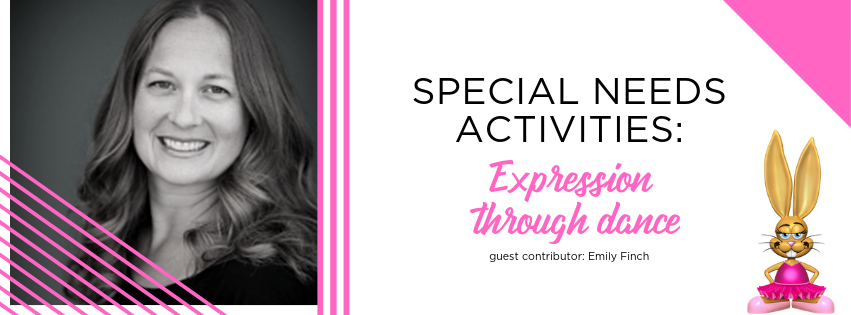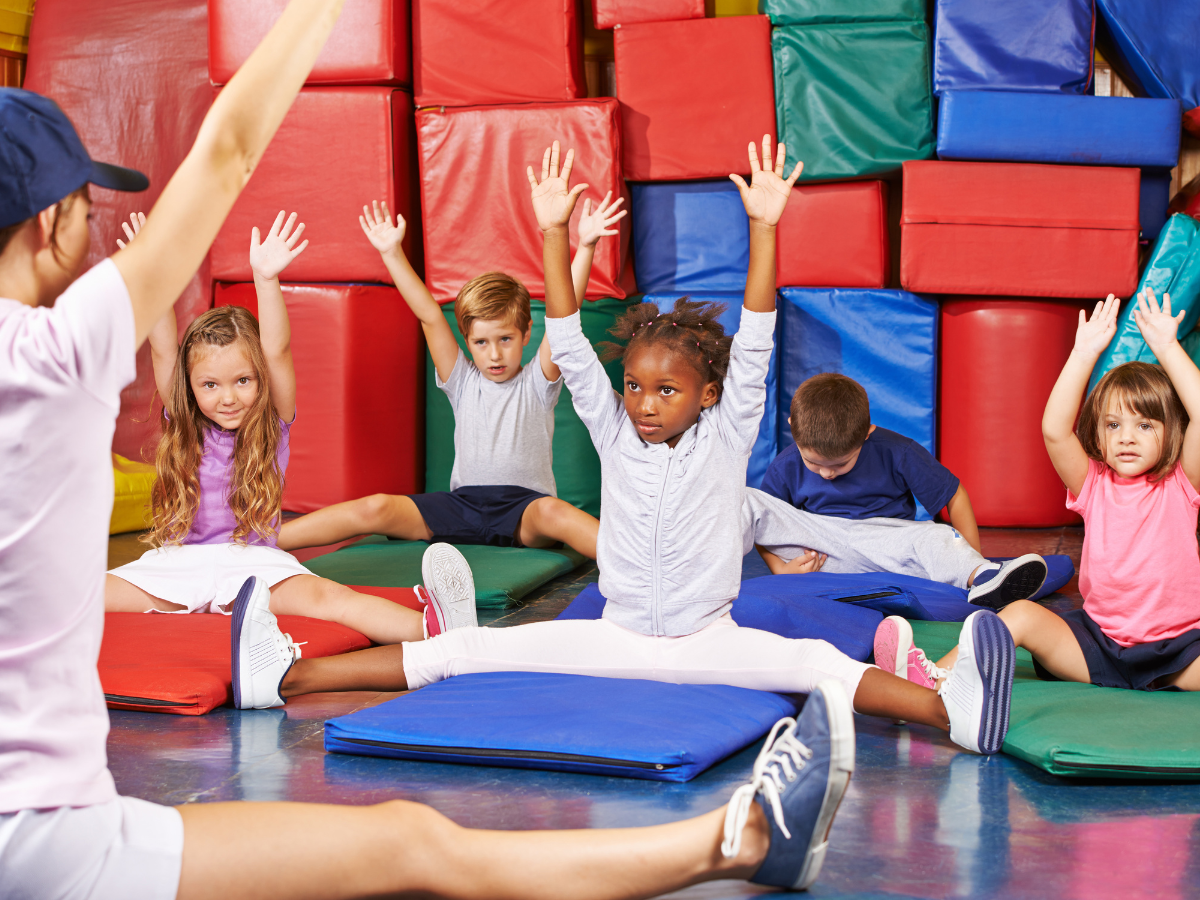Written by Emily Finch
Special Needs Activities: Expression Through Dance
It is often difficult for children with special needs to find enjoyable activities. These can be children with sensory processing disorder, autism, or other socio-emotional or physical difficulties.
Children with these needs can have some or all of a variety of symptoms such as poor attention, difficulty interacting with peers, limited body awareness, or trouble being in social situations that might be overstimulating.
Participating in creative movement or other activities, whether in a group setting or alone help children with special needs align more closely with their neurotypical peers.
Let’s learn more about how dance helps children with special needs.
The physical perspective.
Movement and dance help with body awareness by knowing and understanding parts of your body, and how they work.
Children with sensory processing disorder, or other similar difficulties, might not understand where their bodies are in space or how to work the muscles in their fingers for things like picking up an object. Those who face these challenges might look clumsy and stumble around, or they might have trouble buttoning a sweater or picking up something on the ground.
Being aware of the space around us, aligning our bodies, following movement patterns – all involve control of gross and fine motor skills.
Dance provides children the opportunity to blend the practice of exercising both fine and gross motor skills with creative movement in a fun environment. Giving children the opportunity to explore the space around them, while under the direction of an instructor will help to improve upon particular movements that may be difficult outside of a dance setting.
Dance allows children with special needs to move their bodies in ways that they may have never been encouraged to do before.
The social perspective.
Dance helps children with special needs improve their social interaction. Providing a creative, physical outlet may help reduce the anxiety of making eye contact and appropriately touching others by learning trust through their peers.
The hands-on nature of dance can result in improved cognition, allowing children with special needs to access skills that aren’t typically available in a traditional classroom setting.
The confidence factor.
Interacting with others gives children with special needs a sense of accomplishment and confidence.
When participating in activities such as dance allows children with special needs to interact with their peers, confidence in their ability to do new activities is a beautiful result. They can do things they’ve never done before like perform in a dance recital as part of a group. This interaction inspires peer bonding and motivation to improve.
Developing a sense of self-esteem can be important, as it’s common to feel isolated and removed from a group.
The creative expression.
Children with special needs often have difficulty expressing themselves – or even simply understanding emotions. While dancing, these children have the chance to break out of this shell and express emotions in a place where they don’t feel threatened or judged.
Parents can help foster creative expression by helping their child re-live the stimulating or calming aspects of dance at home by re-enacting dance moves or simply moving to a beat.
Regardless of symptoms, the creative, social and physically opportunities found within a dance class gently pushes any child to thrive.
Think beyond.
Think beyond sensory processing disorders or autism to what this structure can do to help kids with ADHD or even kids with physical difficulties such as prosthetic limbs or cerebral palsy. There are even obvious benefits for children in juvenile detention.
Many instructors and owners feel called to provide classes for those with special needs. Some even develop complete programs.
Does this sound like you? If so, there are some needs and details that must be covered if you want to start a program designated specifically for children with special needs.
Aside from doing research One of the best things you can do is talk to someone who has already done this! You can take a walk in their shoes and leverage what they have learned before you.
An owner’s mantra.
Emily Finch works with special needs children with an awesome approach. ‘Everybody Can Dance’ is her mantra and she is serious about it. She wants special needs dancers to feel comfortable in her studio. She goes out of her way with details like making sure that she nor her staff use the word ‘normal.’
Emily’s Tempe, Arizona studio, Dance 101, has taught special needs children since she began her dance program. The first classes had Emily’s daughters and their friends in them. One of her daughter’s friends has special needs, but she loved to move so Emily talked to the child’s mother about signing her up for classes. That happened when the child was 3 and she is now 12!
“I was inspired by the immense joy that moving in dance class brought to Suzy, my first special needs student, and her family. They love the inclusion and seeing their daughter find joy through dance,” notes Emily.
Advocating for inclusion.
Emily never had to wonder if her program is effective. Suzy’s parents are Emily’s biggest advocates, telling everyone how much it means to them to have their daughter in the dance program.
Because of Emily’s inclusive approach, it’s easy to see how the students learn from interacting with peers of different abilities. It gives students invaluable life lessons in compassion, understanding and getting along with other who are at different stages of development.
“There is so much joy in seeing these students work together no matter what their challenges are. It is neat to see the friendships that are formed in class as they learn from each other,” continues Emily.
Emily’s instructors are thrilled that the studio offers dance to everyone. Her staff continues to research how to be the best possible educators for students of all abilities. It has been a great experience for learning new tactics and making everyone better teachers for everyone.
Dance 101’s website and their publications mention that special needs students are welcome to dance. The studio also participates in an annual community event for special needs children and their families so they can get a taste of what Dance 101 classes are like.
“Our best advertising originates from our parents sharing with others about their dance experience,” Emily shares.
Source:
http://www.specialneeds.com/activities/general-special-needs/activities-special-needs-children-expression-through






